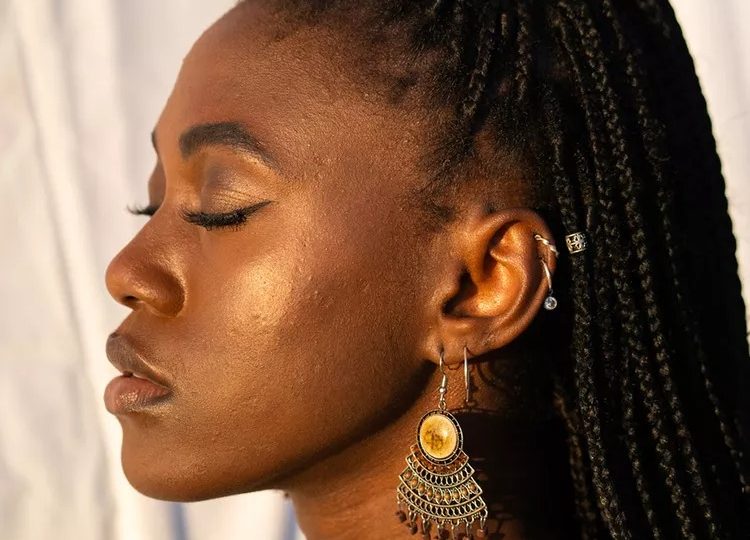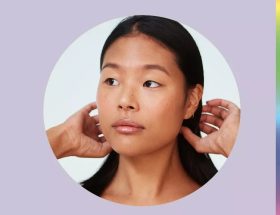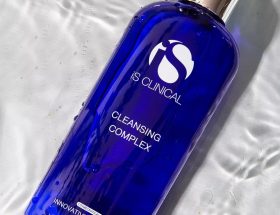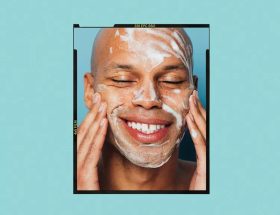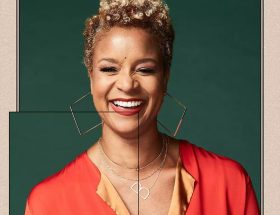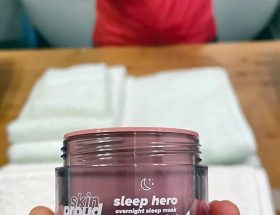Why Acne May Be Harder To Identify In Skin Of Color According to An Expert
The rise of SkinTok (TikTok’s niche skincare world) has taught me two things: That I don’t take good enough care of my skin, and I don’t know what acne looks like. My routine is simple. I wash my face daily, massage in some moisturizer, and occasionally apply some SPF when I don’t forget, shh don’t judge me. Acne never seemed to be a problem for me. Sure, I experienced some bumps here and there, but they didn’t match the image of blackheads or whiteheads I saw on those Proactiv commercials growing up.
Thus, I assumed I luckily escaped the “pre-teen acne” phase unscathed, and that adult acne was farfetched. At least, I believed that SkinTok until arrived. Influencers creating content on the tag were majority white. Still, as the popularity of the skincare segment grew on the platform, more content by creators of color began to circulate. One creator, in particular, pointed out the differences in acne appearances on melanated skin versus white skin. As my fingers hovered over my phone screen, I had a lightbulb moment: Did I have acne?
FEATURED VIDEO
DIY Turmeric Face Mask To Combat Acne
The assumption may seem naive, but the reality is that there are fewer examples of what acne looks like in melanated skin.
Think about general descriptors, like red, puffy pimples, deep red bumps, or inflamed pores with a pinkish color. These characteristics are usually only applicable to non-melanated skin, making it harder for Black and Brown people to identify skin problems.
The struggle of identifying acne in colored skin is a shared experience, says Dr. Adebola Dele-Michael, MD, dermatologist, and medical director at Radiant Skin Dermatology and Laser. “Most acne care commercials and dermatology textbooks feature models with non-melanated skin,” Dr. Dele-Michael says. “This fuels the false impression that acne isn’t an issue for people with darker skin tones or that there are no treatments available for skin of color.” According to Dr. Dele-Michael, this perception is false, and there are many effective acne treatments available for people with dark skin tones.1
MEET THE EXPERT
Dr.Adebola Dele-Michael, MD is a board-certified dermatologist and medical director at Radiant Skin Dermatology and Laser in New York City. She is also an Assistant Professor of Dermatology at Mount Sinai School of Medicine.
Still, identifying acne on darker complexions isn’t that simple. According to Dr. Dele-Michael, there isn’t a one-size-fits-all model on how acne appears, but signs can indicate. For example, hyperpigmentation is typically a sign of an underlying skin or health condition. Other signs may include keloids or ingrown hairs.2
Even if you can identify hyperpigmentation or keloids on your skin, the challenge of recognizing whiteheads, blackheads, cysts, and noodles remain. As a solution, Dr. Dele-Michael recommends a board-certified dermatologist who can correctly identify any acne on your skin and advise proper treatment. “Acne can be difficult to diagnose for people with darker skin tones because the condition can appear differently for everyone,” she says. “I recommend visiting a board-certified dermatologist with experience treating skin of color to avoid delays in diagnosis and treatment.”
However, finding a board-certified dermatologist with experience in skin color can be another upheaval. Dermatology is a predominantly white medical field where experts of color make up a small percentage. This, plus the lack of education on melanated skin, can make it difficult for people of color to get the treatment they need, Dr. Dele-Michael explains. However, all hope isn’t lost. There are helpful resources like the Skin of Color Society that make it easier for people of color to find dermatologists who match their needs.
When visiting your dermatologist, Dr. Dele-Michael says your doctor will recommend the right products and treatments for your skin. They will also be able to diagnose any skin conditions accurately. Dr. Dele-Michael explains that in skin of color, conditions like rosacea and ingrown hairs can mimic acne, so you may not even have acne at all. The complexity of diagnosing skin conditions makes it even more important to consult a dermatologist first.
I didn’t find a dermatologist to prescribe treatment for my acne, but I began paying more attention by caring for those occasional bumps instead of ignoring them. I’ve also started using products specifically for Black skin to stop flare-ups before they occur.
While it’s still tricky to identify acne on my skin, it’s something I am aware I should be diligent about, given the lack of representation on acne in skin of color. While TikTok might seem like a tempting source, your best bet is talking to a dermatologist first and triple-checking any and every recommendation or tip to make the best decision for your skin.
